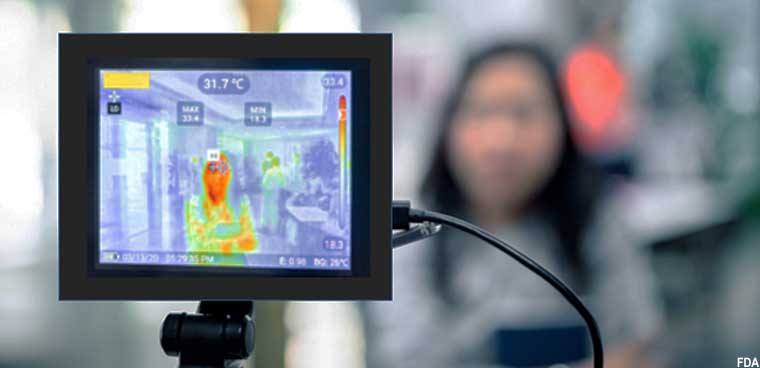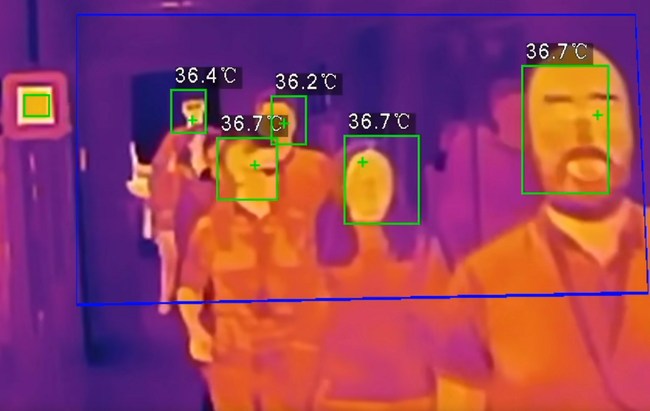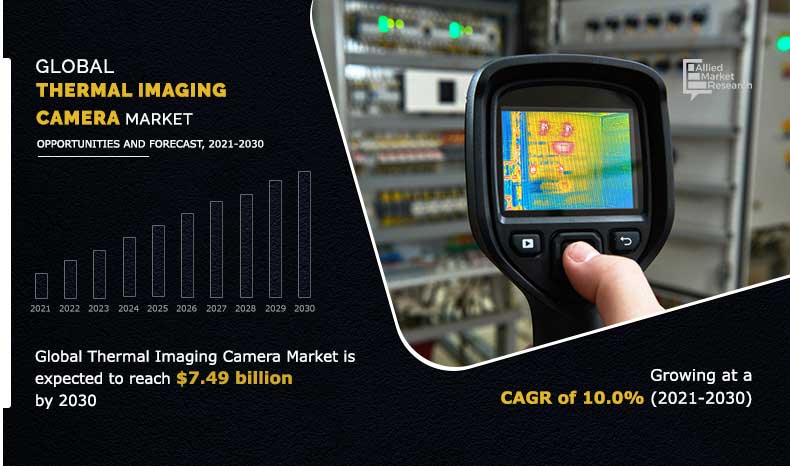The Power of Infrared Thermal Imaging for People Detection

Key Takeaways
- Enhanced Visibility: Thermal imaging detects people in darkness, smoke, fog, and dust
- Wide Applications: Used in security, healthcare, crowd management, and search operations
- Temperature Analysis: Identifies fever and abnormal body temperatures for health screening
- Privacy Preservation: Monitors movement patterns without capturing identifying features
- Growing Market: The thermal imaging sector is expanding rapidly across industries
Understanding Infrared Thermal Imaging
Infrared thermal imaging, also called thermography, is a technology that detects heat signatures emitted by objects and converts them into visible images. Unlike traditional cameras that require light to create images, thermal cameras detect infrared radiation (heat) that all objects naturally emit.
This capability makes thermal imaging particularly valuable for detecting people in challenging visibility conditions where conventional cameras fail. The technology creates a visual heat map where warmer objects (like humans) appear as brighter colors against cooler backgrounds, making people easily distinguishable even in complete darkness.
 Thermal imaging clearly reveals human presence in complete darkness
Thermal imaging clearly reveals human presence in complete darkness
How Thermal Cameras Detect People
Thermal cameras work by using specialized sensors that detect infrared radiation in the 9,000-14,000 nanometer wavelength range. The human body, which maintains a relatively constant temperature of around 37°C (98.6°F), emits a distinctive heat signature that stands out against most environmental backgrounds.
When a thermal camera captures this radiation, it processes the information to create a thermogram—a heat map where different colors represent different temperatures. Advanced algorithms then analyze these patterns to identify human shapes and distinguish them from other warm objects in the environment.
The technology operates effectively regardless of lighting conditions, making it invaluable for 24/7 monitoring applications where consistent performance is critical.
Applications Across Industries
Security and Surveillance
Thermal imaging has revolutionized perimeter security by enabling the detection of intruders in complete darkness, through foliage, or in adverse weather conditions. The technology is widely deployed at borders, critical infrastructure, and commercial facilities to provide reliable threat detection regardless of environmental conditions.
Modern security systems combine thermal cameras with video analytics to automatically identify human presence, track movement patterns, and trigger alerts when unauthorized access is detected.
Crowd Management and Public Safety
Large venues like stadiums, airports, and transportation hubs use thermal imaging for crowd monitoring and management. The technology provides valuable data on crowd density, movement patterns, and potential bottlenecks without capturing personally identifiable information.
 Temperature Monitoring with IR Cameras
Temperature Monitoring with IR Cameras
During the COVID-19 pandemic, many facilities implemented thermal screening systems to identify individuals with elevated body temperatures, potentially indicating fever. The London Stadium, for example, deployed thermal cameras to screen guests as part of their health safety protocols.
Healthcare Applications
In healthcare settings, medical-grade thermal imaging provides non-invasive diagnostic capabilities. The technology can detect inflammation, circulatory issues, and abnormal temperature patterns associated with various medical conditions.
Thermal imaging helps healthcare professionals visualize:
- Cardiovascular health issues through blood flow patterns
- Musculoskeletal inflammation and injuries
- Sinus and respiratory conditions
- Dental problems through facial temperature variations
Search and Rescue Operations
Thermal imaging is invaluable in search and rescue missions, allowing teams to locate missing persons in wilderness areas, collapsed buildings, or disaster zones. The technology can detect human heat signatures from significant distances, even when victims are unconscious or partially obscured by debris.
Integration with AI and Computer Vision
The true power of thermal imaging for people detection emerges when combined with artificial intelligence and computer vision algorithms. These technologies work together to:
- Distinguish humans from animals and other heat sources
- Count individuals within groups
- Track movement patterns and behaviors
- Identify unusual activities or potential threats
- Generate automated alerts based on predefined criteria
This integration transforms thermal cameras from simple visualization tools into intelligent monitoring systems capable of autonomous operation and decision support.
Market Growth and Future Trends
The thermal imaging market is experiencing significant growth as the technology becomes more accessible and applications expand. According to Fortune Business Insights, the global temperature sensor market was valued at USD 5.02 billion in 2018 and is projected to reach USD 7.88 billion by 2026.
The Insight Partners forecasts that the infrared cameras market will reach US$ 9,055.58 million by 2027, driven by increasing adoption across security, industrial, and healthcare sectors.
Future developments in thermal imaging technology include:
- Higher resolution sensors for improved detail
- Smaller, more affordable devices for wider deployment
- Enhanced AI capabilities for more sophisticated analysis
- Integration with other sensing technologies for comprehensive monitoring
- Expanded applications in autonomous vehicles and smart cities
 IR Camera Market Growth
IR Camera Market Growth
Conclusion
Infrared thermal imaging represents a powerful technology for people detection across diverse environments and applications. By visualizing heat signatures rather than relying on visible light, thermal cameras overcome the limitations of traditional surveillance systems and provide reliable detection capabilities in challenging conditions.
As the technology continues to evolve and integrate with advanced analytics, we can expect thermal imaging to play an increasingly important role in security, public safety, healthcare, and numerous other fields where reliable people detection is critical.
Interested in exploring how thermal imaging and computer vision technologies can enhance your people detection capabilities? Contact Visionify today to learn about our custom solutions that integrate advanced vision systems with thermal imaging.
Frequently Asked Questions
Find answers to common questions about this topic
Want to learn more?
Discover how our Vision AI safety solutions can transform your workplace safety.
Schedule a DemoSchedule a Meeting
Book a personalized demo with our product specialists to see how our AI safety solutions can work for your business.
Choose a convenient time
Select from available slots in your timezone
30-minute consultation
Brief but comprehensive overview of our solutions
Meet our product experts
Get answers to your specific questions
Subscribe to our newsletter
Get the latest safety insights and updates delivered to your inbox.
